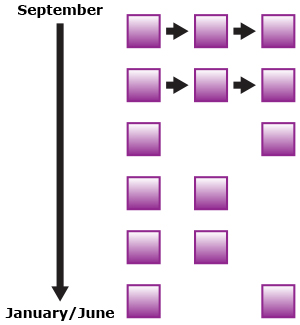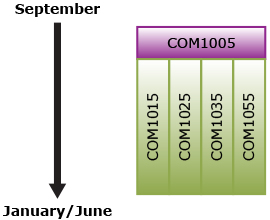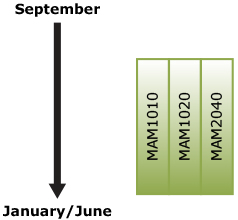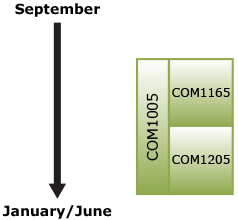Timetabling and Scheduling For CTS Courses
Standard Class Scheduling
Standard class scheduling involves timetabling CTS classes using the Carnegie Unit organizational model; i.e., a time-credit relationship. Such practices, usually established at the school level through various software programs, provide for instruction through clearly defined time blocks. Standard class scheduling can be effectively used to timetable CTS classes (student has access to a minimum of 25 hours of instruction per course), assign students and teachers, and monitor attendance.
Using typical timetabling practices, schools may decide to
- schedule time blocks when students select from a menu of courses
- schedule a specific CTS course within an instructional time block
- schedule multi-level courses concurrently within an instructional time block
- cycle particular courses over semesters or school years
CTS emphasizes experiential learning. It is important that students have opportunities to demonstrate and practise the competencies they develop. Class length should provide sufficient time for hands-on experiences as well as work set-up and clean-up. Class sequencing should provide frequent opportunities for students to practise the skills they are learning.
The following scenarios represent some possible ways of organizing for instruction within standard time blocks.
Scenario A
From a list of courses provided by the teacher, students select which ones they will work on and, in consultation with the teacher, establish timelines for completion and submission of assignments.

Scenario B
All students work on one or more courses together and then are able to select from a list of courses that are available for individual or small group learning. The menu of courses could be from one or more occupational areas.

Scenario C
Students work on three courses within an instructional time block. This strategy is often used when students are working on an integrated project, such as operating a school store or handling customer work; e.g.,
MAM1010: Marketing & Management
MAM1020: Quality Customer Service
MAM2040: Retail Operations

Scenario D
Students work on one course throughout the year/semester (e.g., 20 minutes per class or one class per week) and then spend the remainder of the class time working on other courses; e.g.,
COM1005: Visual Composition (throughout the term)
COM1165: Printing 1
COM1205: Photography – Introduction

Scenario to Be Determined
Schools may also consider other methods for expanding or enhancing delivery of CTS programs, keeping in mind that the quality of interaction between student and teacher has a profound influence on learning. Many of the options outlined can be used as an extension to, or in combination with, standard class timetabling.